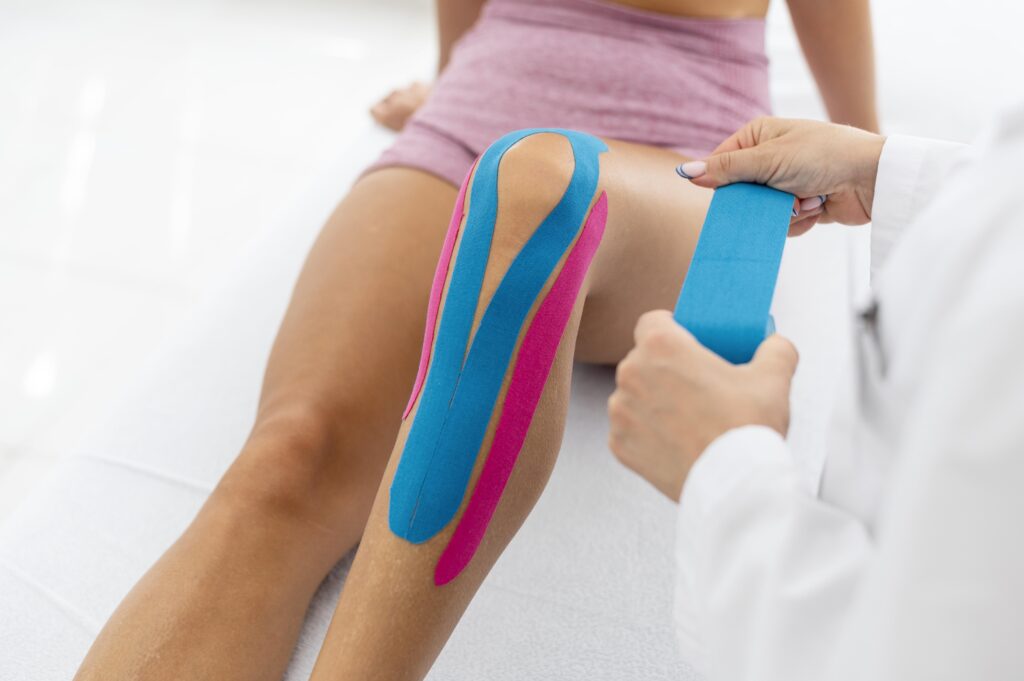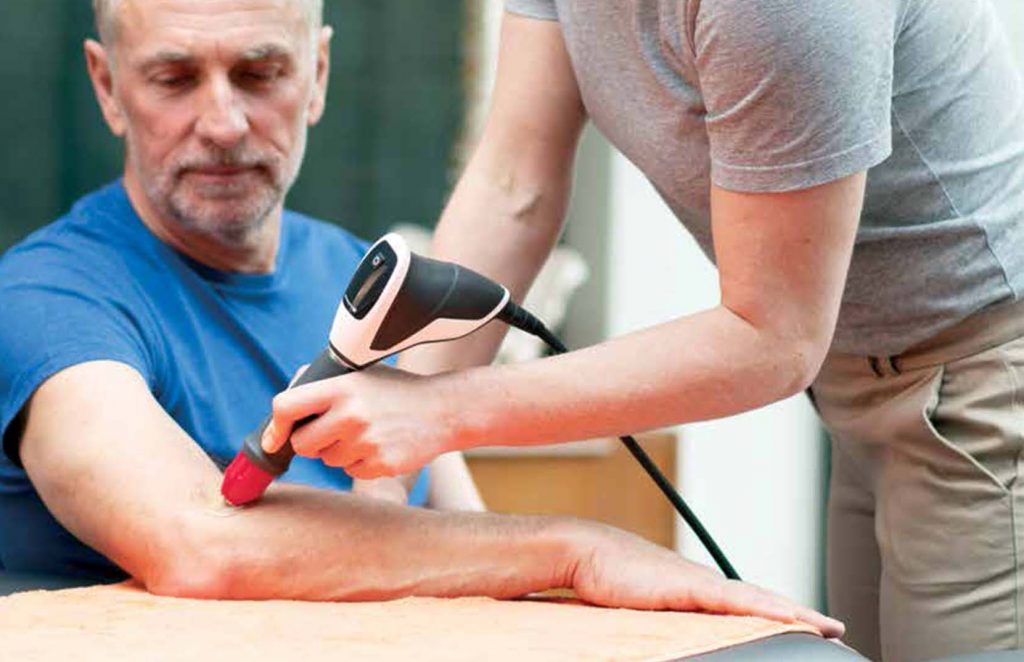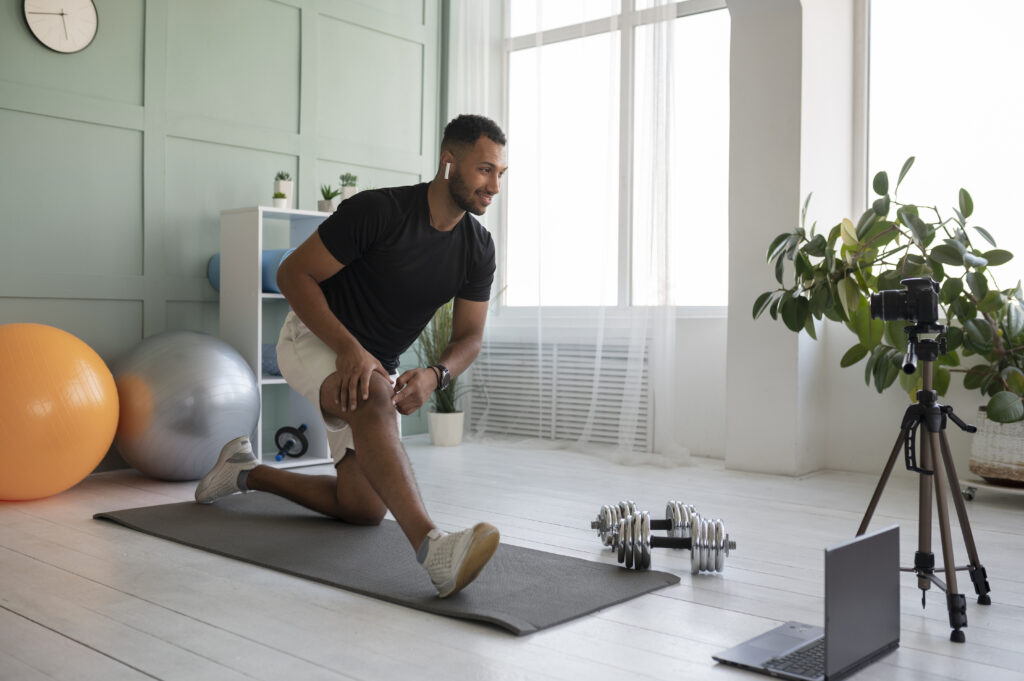
What is Physiotherapy?
Physiotherapy is a medical treatment that focuses on helping people restore, recover, and rebuild motion and function lost from injuries or illnesses. Physiotherapists are regulated health professionals and work with patients to improve their range of motion, strength, balance, and overall physical function.
Looking for Physiotherapy in Mississauga?
At PhysioCure, our Registered Physiotherapists take a thorough history including quality, duration, and intensity of symptoms. Symptoms may include pain, swelling, stiffness, weakness, numbness, tingling, or a functional impairment. Whether there is a specific cause or an unknown cause, gradual onset or sudden onset of symptoms, our therapists are trained to diagnose and treat your condition.
How would a Physiotherapist assess my condition?
Our Registered Physiotherapists are primary health care providers in the province of Ontario, so you do not require a referral, unless otherwise required by your private insurance.
During your first physiotherapy visit, we will investigate aggravating and alleviating factors and take objective measures to assess range of motion, strength, myotomes/dermatomes, reflexes, balance, posture, gait, and biomechanics.
We also have special movement tests for each relevant joint, which rule in and rule out certain conditions. Once a diagnosis is determined, a thorough treatment plan is developed.What type of Treatments do Physiotherapists offer?
Our treatment can include joint mobilizations, graded exercise, myofascial release, therapeutic taping, therapeutic ultrasound, electrotherapy, acupuncture, ergonomics, vestibular rehabilitation, and many other types of treatments. We also fit and dispense custom orthotics, compression stockings, and bracing.
We discuss goals with our patients and each treatment is designed to achieve these goals. Goals can include returning to simple activities of daily living such as sleeping, walking, climbing stairs, preparing food, getting dressed, reaching, or lifting to more complex activities such as operating heavy equipment at work or getting back to a competitive sport.
How can Physiotherapy help me back to work or sport?
If you have injured yourself at work or in a sport, it can be unclear when it is safe to return to full duties. We can assess your work injury or sport injury to determine the right treatment plan and it can include returning to certain activities while we complete your rehabilitation. If you have injured yourself in a car accident, you may have multiple injuries. We can assess and treat you with the care you need using evidence-based techniques to get you back to your pre-accident state. Have you had a recent fracture or surgery? Our therapists are trained in following the appropriate protocols to ensure optimum recovery.
What are the benefits of Physiotherapy?
There are many benefits of Physiotherapy. Our treatment philosophy is to empower patients with knowledge and to provide the necessary tools to decrease pain, improve range of motion, prevent re-injury, and improve functional abilities in sport, work and at home.
What is the cost of Physiotherapy?
To find out more about our rates, please contact us 905-848-2873 or email us at info@physiocure.ca. We offer direct billing to most insurance companies.
Physiotherapy Treatments

JOINT MOBILIZATIONS
Joint mobilizations are delivered by holding one segment of a joint stable while providing gentle passive movement to the adjacent segment. This helps to increase range of motion and decrease pain. Mulligan with Movement (MWM) is where the therapist applies pressure to a joint during active movement by the patient. Manual traction involves applying a pull on the vertebrae or joint to create space. This is used to decrease pain, numbness, and tingling.

GRADED EXERCISE
Graded exercises are progressive sets of exercises prescribed to a patient during a physiotherapy treatment. Based on routine assessments, exercises are progressed according to a specific stage of recovery. These exercises can include passive range of motion, active assisted range of motion, active range of motion, isometric, concentric, eccentric, and plyometric exercises. Repeated exercises are also sometimes prescribed to a patient during a treatment approach involving the McKenzie Method. The goal of graded exercises is to progress exercises for optimal healing.

MYOFASCIAL RELEASE
Myofascial release reduces movement restrictions. These restrictions often occur due to tight muscles and fascia which lead to pain. During this type of therapy, physiotherapists apply manual pressure on specific points to facilitate soft tissue release. Other types of similar techniques used by Physiotherapists include trigger point release, soft tissue distraction, and friction massage. This helps to increase circulation to an area, break down scar tissue, reduce pain and increase movement.

THERAPUETIC TAPING
Therapeutic taping involves the use of flexible or rigid tape applied in a specific direction and force to facilitate optimal muscle movement or restrict it to allow for tissue healing. Taping can help decrease pain, decrease edema, provide stability, and off load injured muscles.

THERAPUETIC ULTRASOUND
Therapeutic ultrasound uses sound wave technology to increase circulation to an area and energize the cells needed for collagen repair. Ultrasound assists with the healing process of an injured muscle, tendon and/or ligament.

ELECTROTHERAPY
Electrotherapy is used for muscle relaxation, swelling reduction and pain relief. Pads are applied in a specific position to stimulate a target muscle group causing relaxation from a tense and tight state. By increasing permeability of cells, it also takes away swelling. By blocking pain receptors, it helps to reduce pain.

ERGONOMICS
Acute postural dysfunction causes neck and upper back pain. Chronic postural dysfunction starts a downstream effect leading to pain, numbness and tingling in the shoulder, elbow and/or wrist. Working long hours in front of the computer with a poor ergonomic setup is one of the biggest causes of this postural dysfunction. Correct sitting posture while working is essential to good neck and back health. Whether you are working from home or at work, careful attention is needed toward how we sit for prolonged periods of time. Adjusting monitor height, improving support on your chair, adding cushioning for your wrists, and resting your feet on a foot stool are just some of the simple ways to avoid postural dysfunction. If your pain pattern sounds like this, physiotherapy can get you back to working pain free with manual therapy and a customized exercise program.

SHOCKWAVE THERAPY
Shockwave Therapy is a non-invasive therapeutic intervention which uses high energy sound waves to stimulate cellular activity, enhance blood circulation and thereby improve the healing process. The mechanical force from the sound waves causes the release of growth factors and increases metabolic activity which aids in tissue repair and regeneration.

VESTIBULAR REHABILITATION
The vestibular system is located in the inner ear. It contains 3 semicircular canals and 2 otolith organs, which detect head rotation and linear acceleration respectively. This system is responsible for monitoring the position of the head in space. When dysfunction occurs to this system, it displays itself as vertigo, dizziness, nausea, hearing loss, tinnitus, and impaired balance. Day to day functions become very challenging. By assessing your balance, gait, visual stability, and neck movement, we can determine if vestibular rehabilitation is right for you.

VIRTUAL PHYSIOTHERAPY
Sometimes visiting a clinic can be challenging, but you’re dealing with unresolved pain and musculoskeletaldysfunction. Imagine if you could simply sit at your computer in the comfort of your own home and talk to your Physiotherapist directly by the simple click of a button. We offer Virtual Physiotherapy via a private and secure platform for this reason. Benefits include education and training on self-directed treatments and exercises
